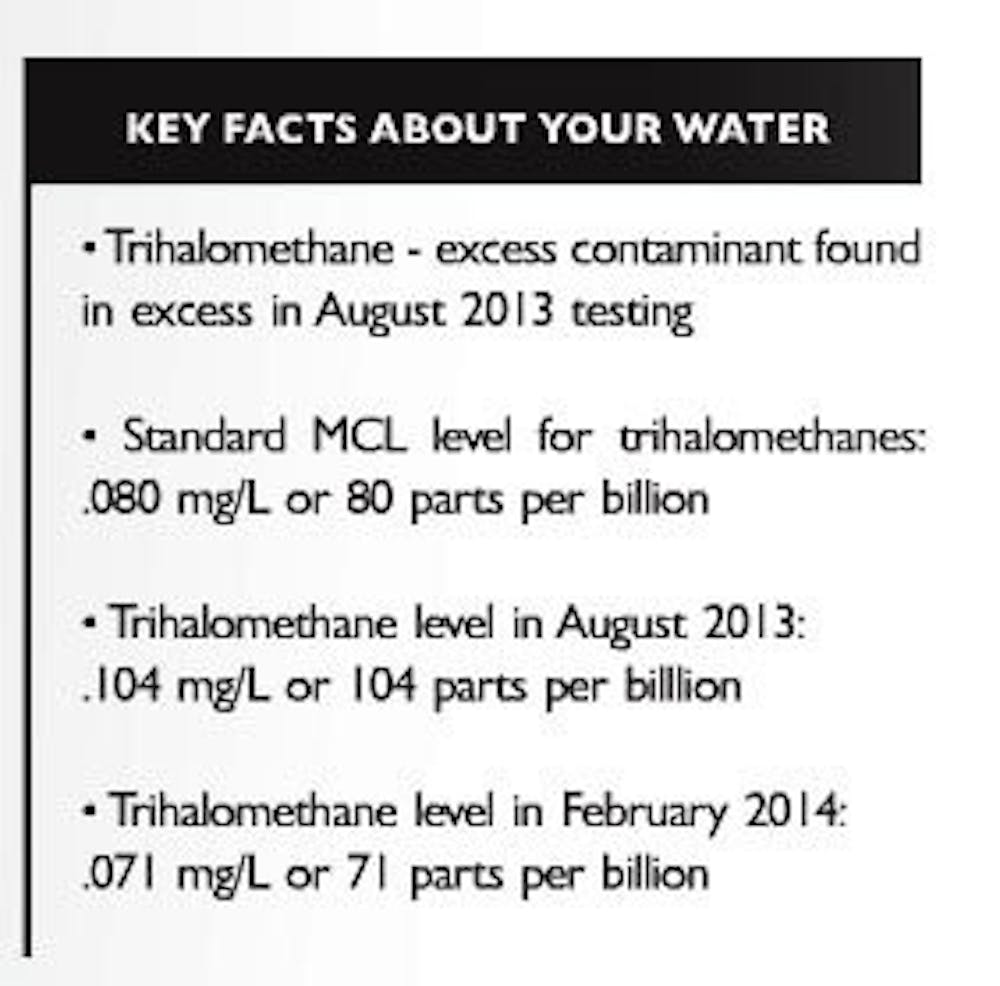When Auburn residents opened their mailboxes this week, they had a notice from the Auburn Water Works Board. Opening the letter, they read past the large words, percentages and unfamiliar names before stumbling upon a few troubling words.
Contaminant. Auburn Water, Limit Exceeded.
The notice was sent out to every Auburn Water Works customer due to the Environmental Protection Agency's stringent rules on notification.
"In January of 2012, the EPA enacted a new regulatory system with tighter limits on compounds found in water," said Tim Johnson, utility engineer at auburn's water resource department. "It's very difficult to meet those limits."
In the notice, residents were told Auburn water in the Bent Creek Road area exceeded the maximum contaminant levels in August of 2013. The standard MCL level for trihalomethanes, the contaminant found in excess in the August 2013 testing, is 0.080 mg/l. or 80 parts per billion.
In the August testing, the trihalomethane level was 0.104 mg/l. The most recent testing, conducted in February 2014, showed levels to be below the maximum, totaling .071 mg/l.
Many residents were concerned about the effects of the elevated trihalomethane levels due to a section in the notice that addressed possible problems.
According to the notice, "This does not pose an immediate risk. If it did, you would have been notified immediately. However, studies have indicated that some people who drink water containing trihalomethanes in excess of the MCL over many years may experience problems with their liver, kidneys, or central nervous system, and may have an increased risk of getting cancer."
According to the EPA, trihalomethanes are formed along with chlorine, which Auburn uses to disinfect its water, and reacts with naturally occurring matter in water.
"It just makes you wonder what's actually in your water," Auburn Professor Nan Fairley said.
Johnson said the level does not pose any kind of risk and no illnesses have been reported.
"Our research concludes that a person would have to drink two liters of water per day for a lifetime to have a high risk of becoming ill," Johnson said.
Johnson also said this was an isolated incident and that another reason the water tested high in 2013 was due to the closing on an Opelika water plant. The water tested came from another Opelika plant and the water was "a little older than we were used to."
According to Johnson, the water's age also prompted the high levels of trihalomethanes.
"We want to assure the city that we provide high quality water and the water in Auburn is nothing to be concerned about, it is safe to drink it," Johnson said.
Do you like this story? The Plainsman doesn't accept money from tuition or student fees, and we don't charge a subscription fee. But you can donate to support The Plainsman.





